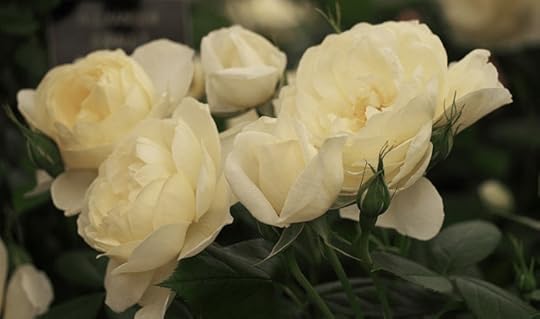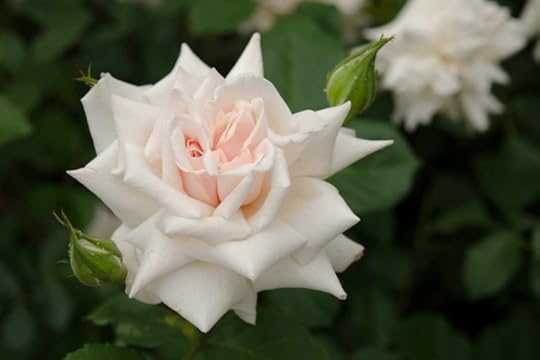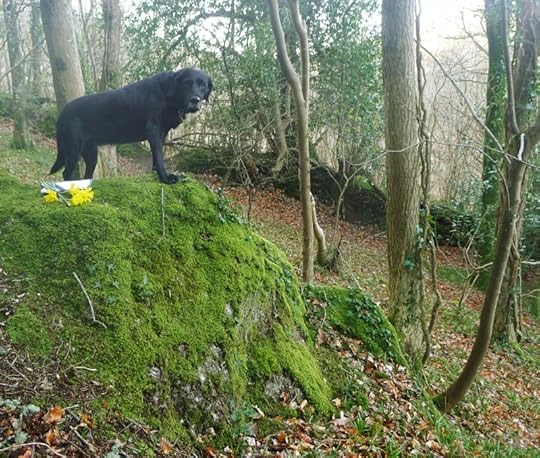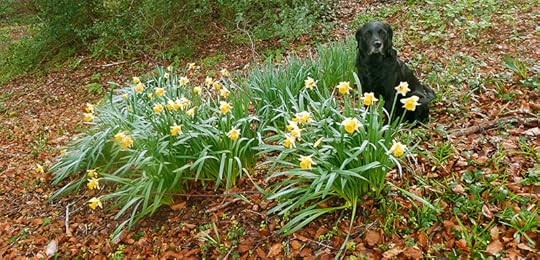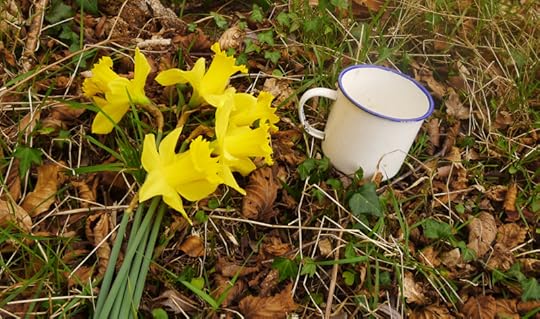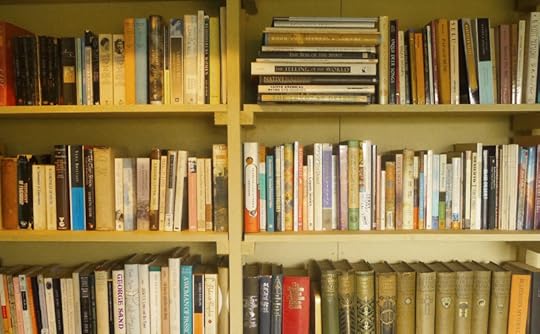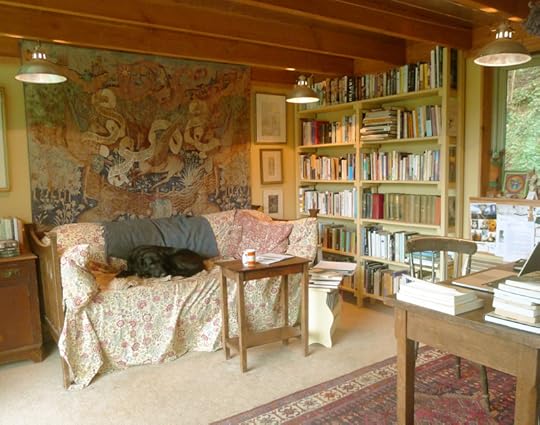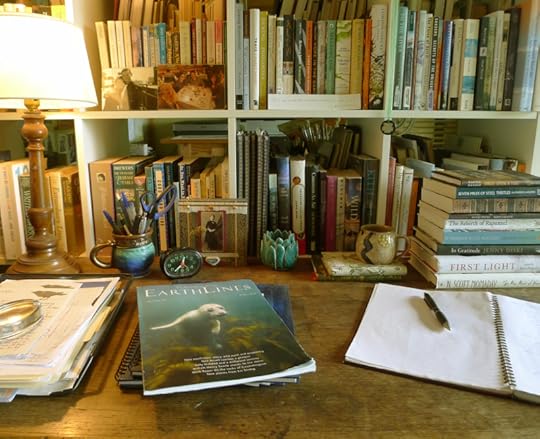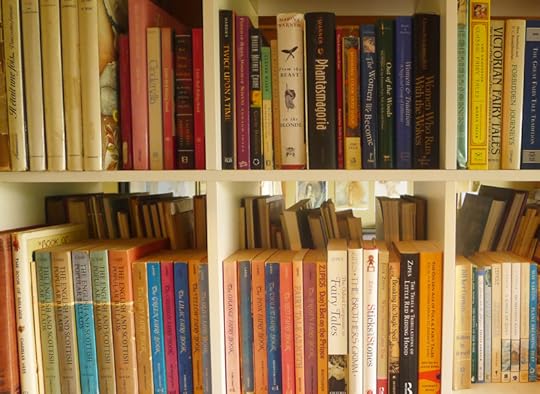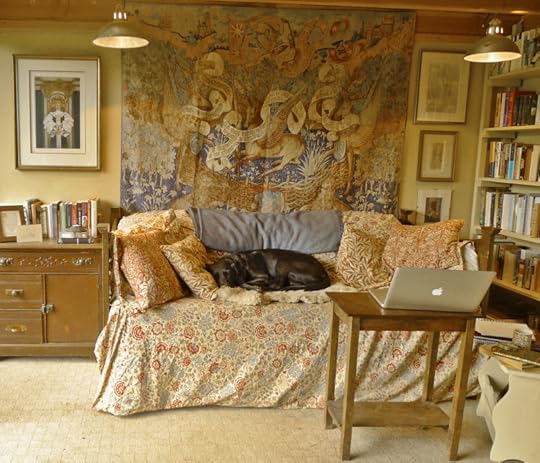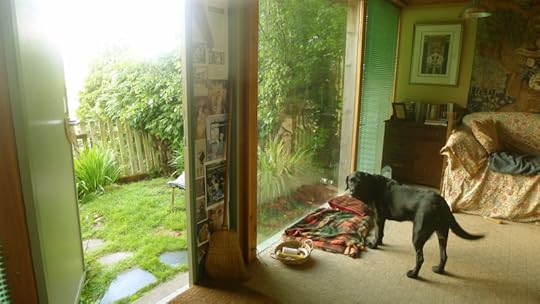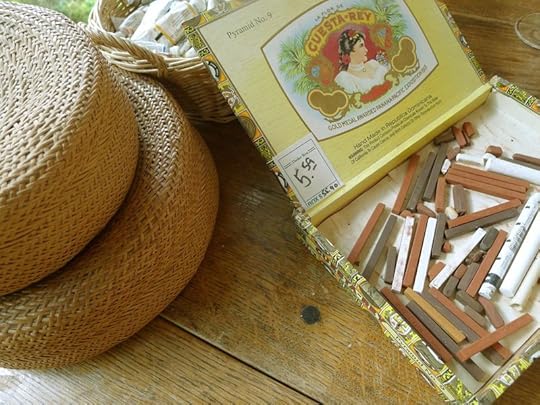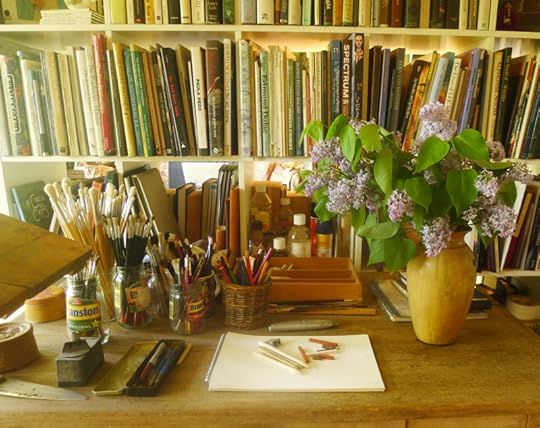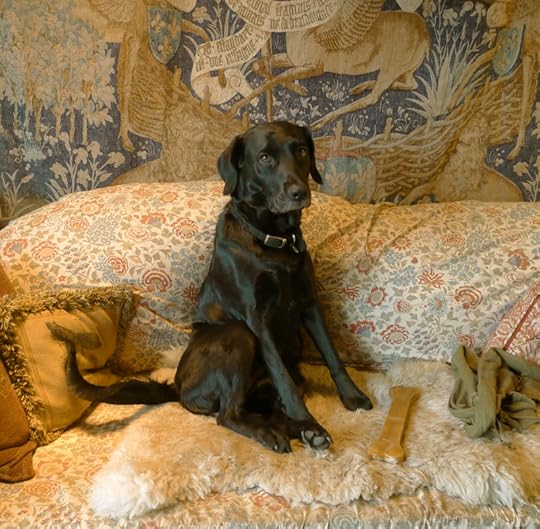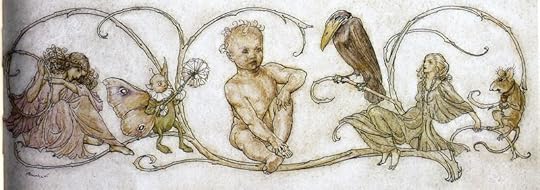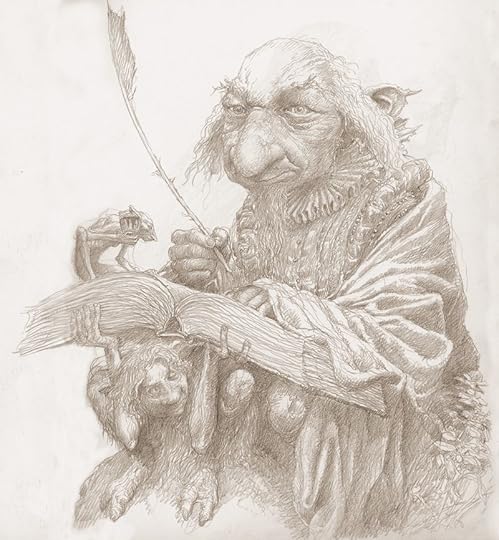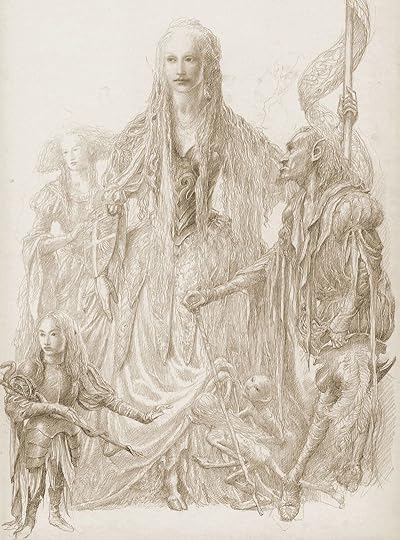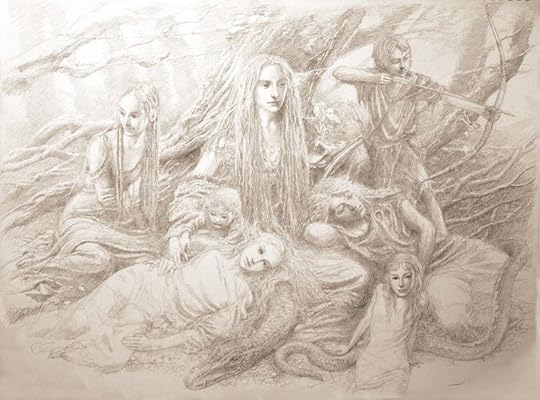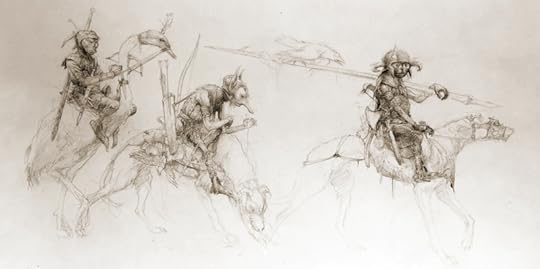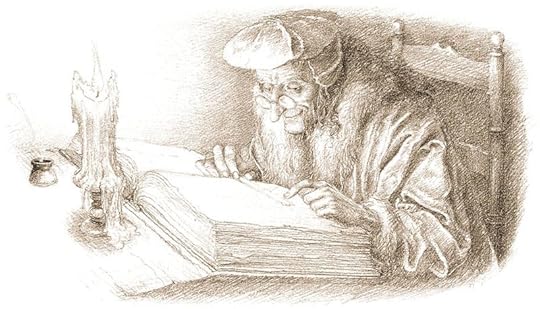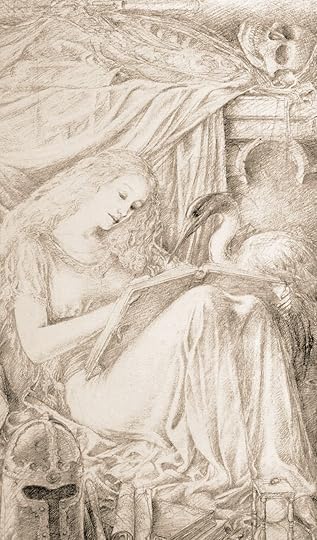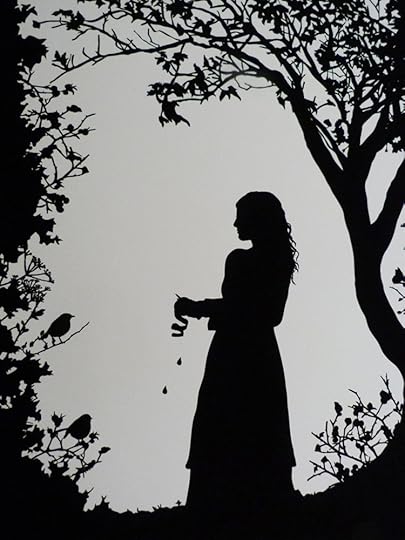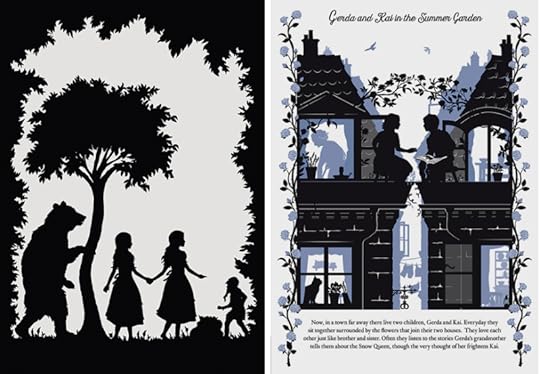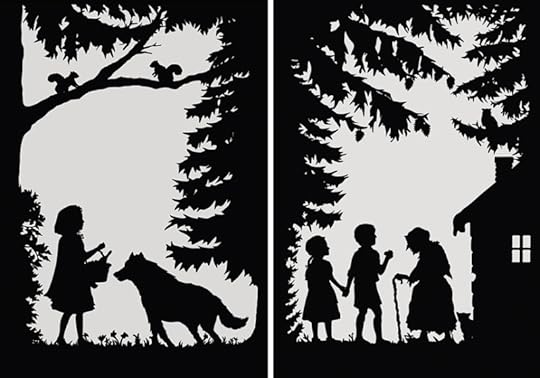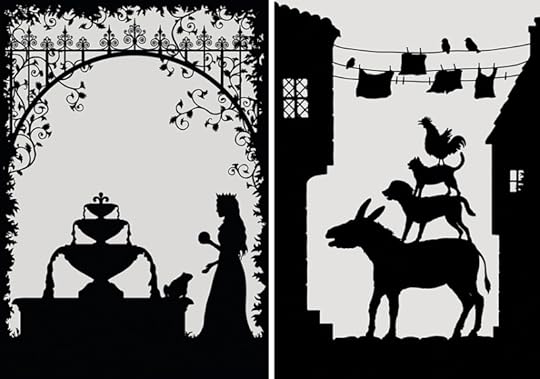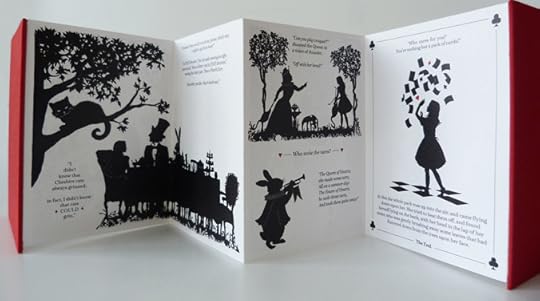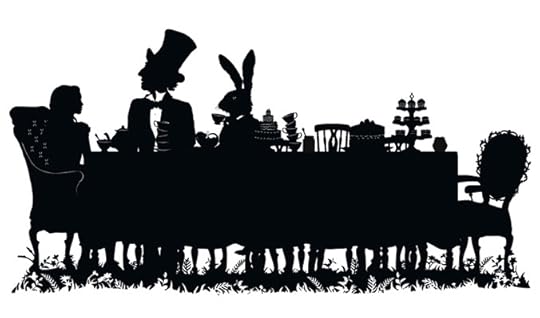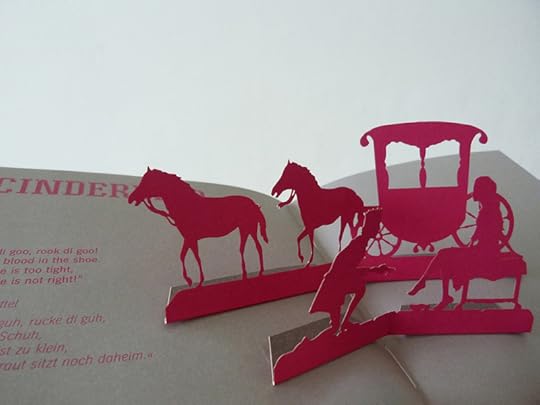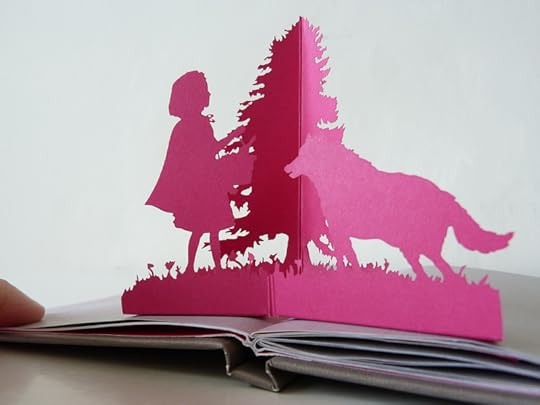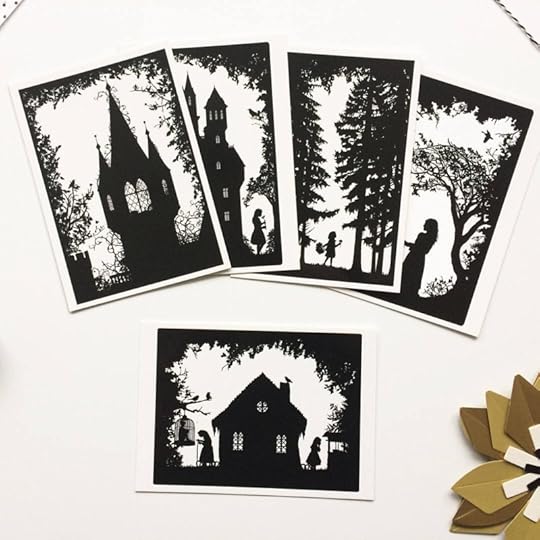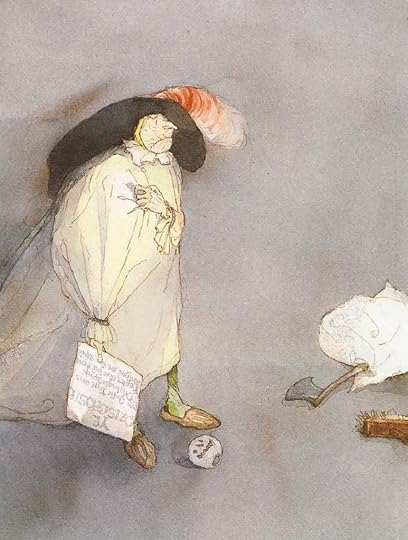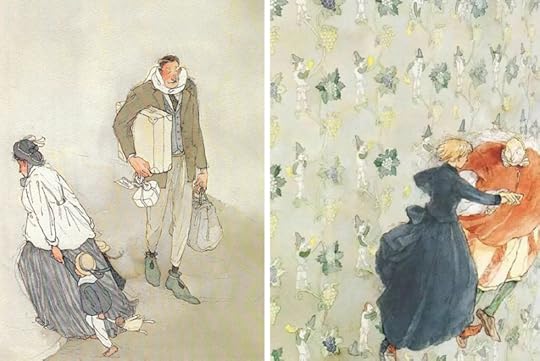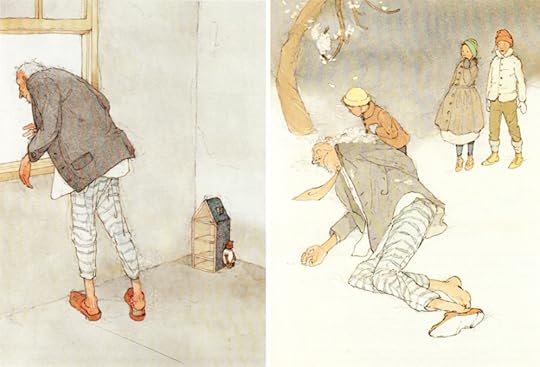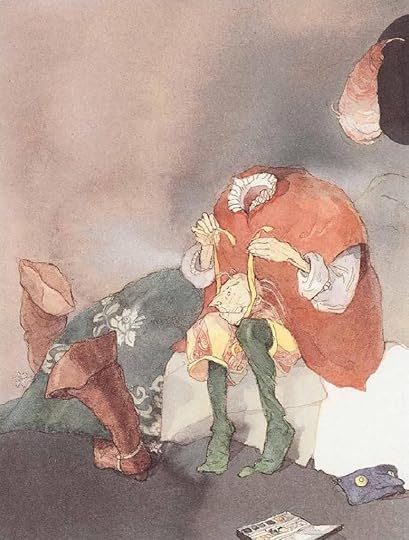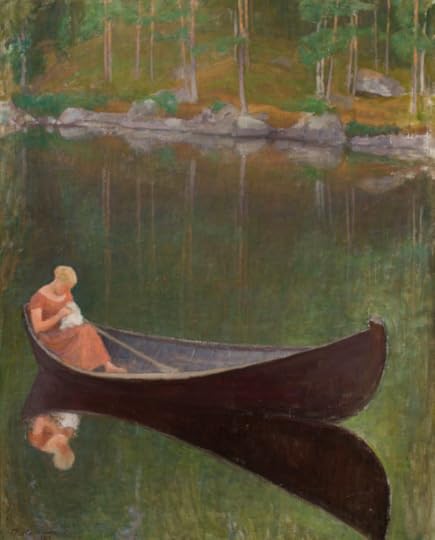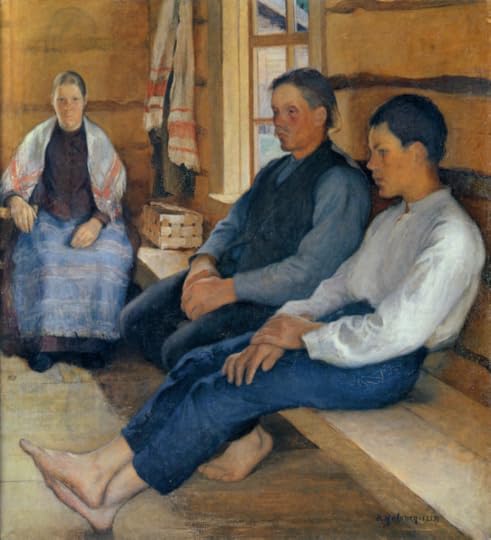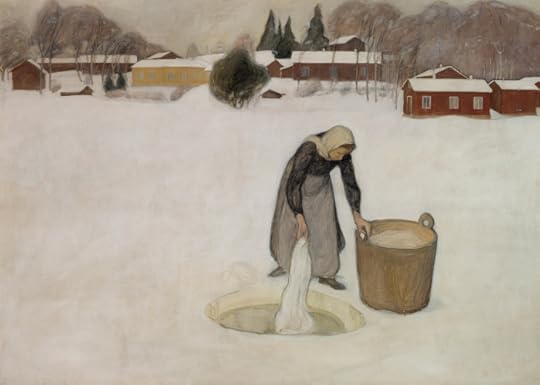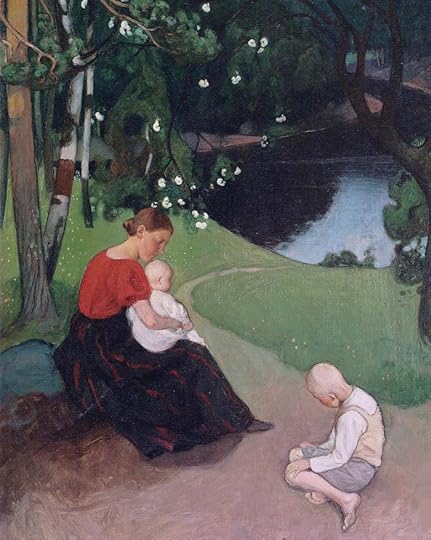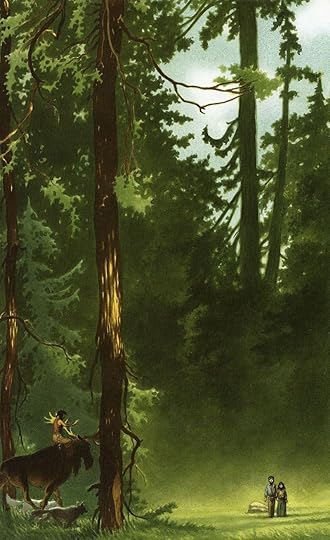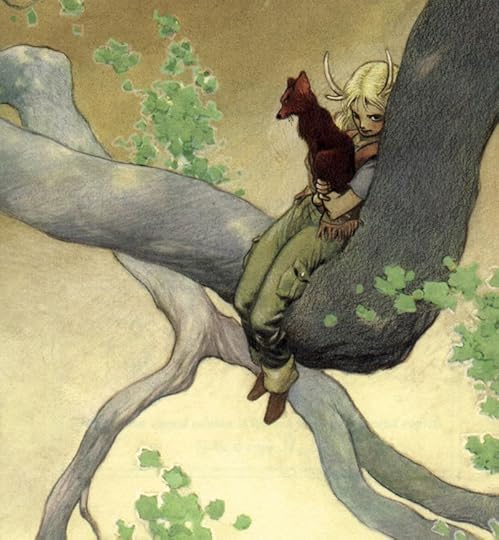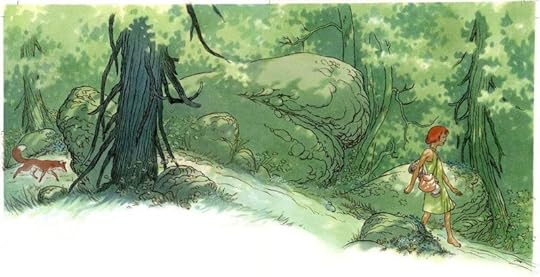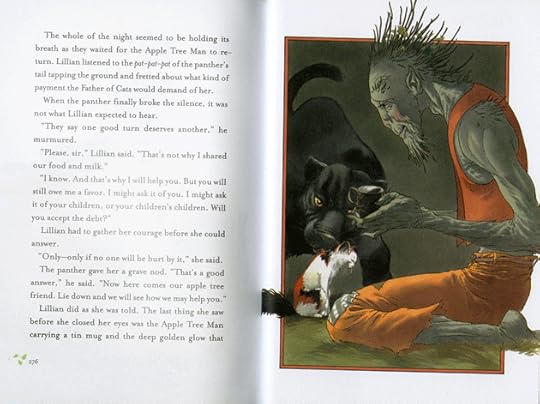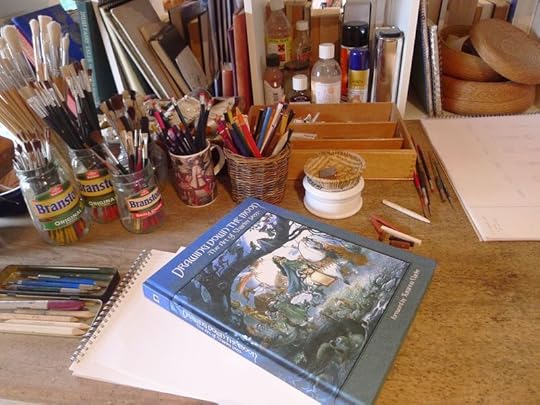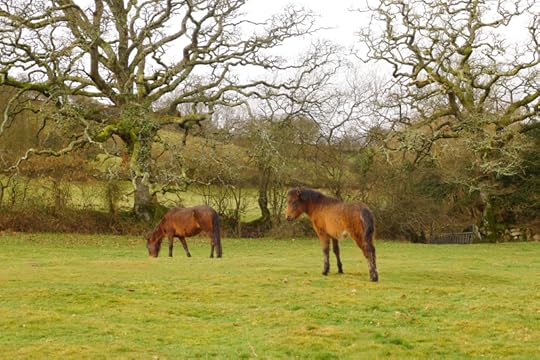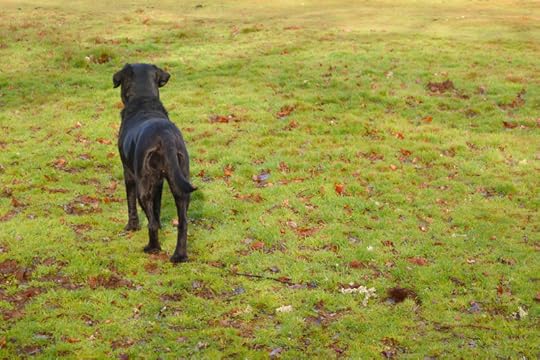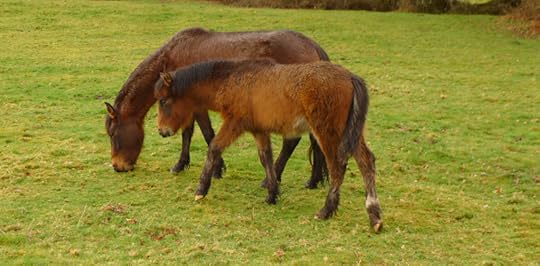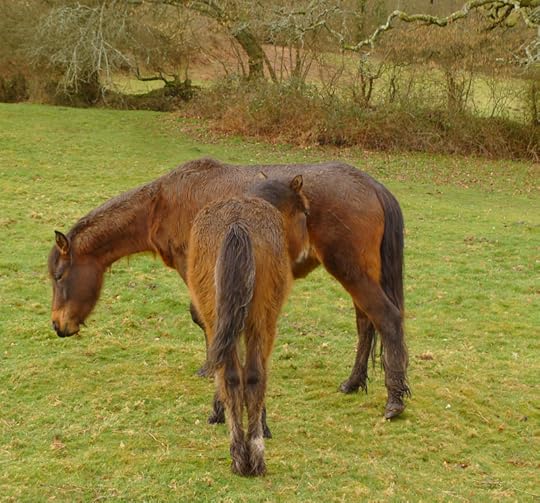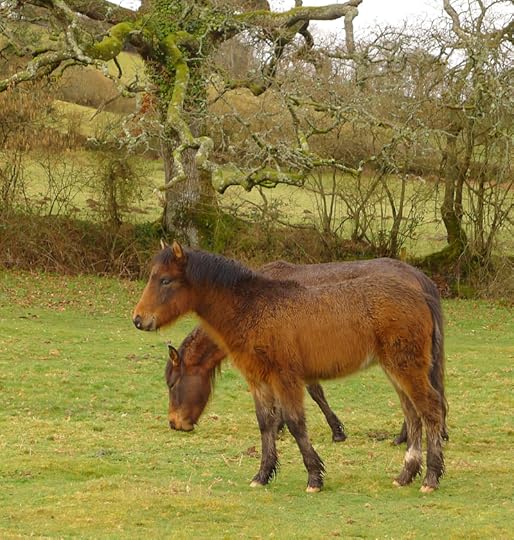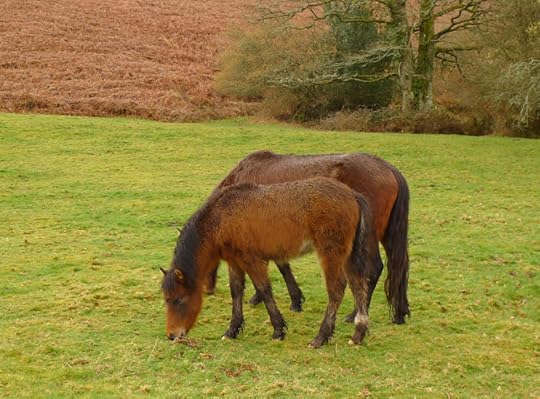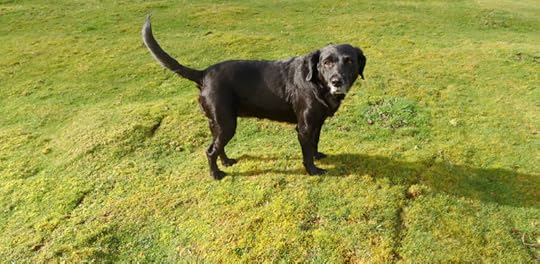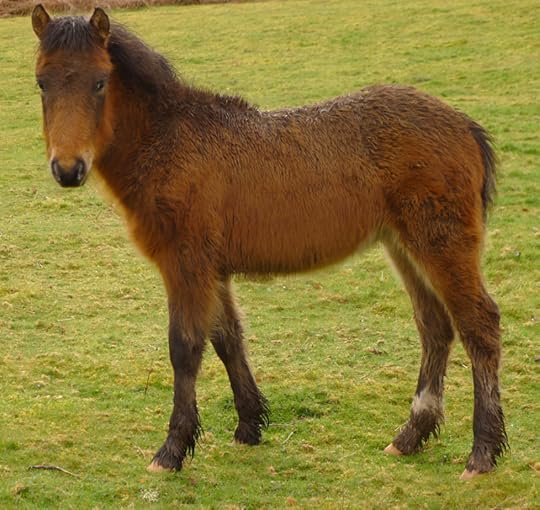Terri Windling's Blog, page 64
March 18, 2019
Tunes for a Monday Morning
Today, art for hard times. We can be the healing.
Above: "The Flower" by American musician and activist Michael Franti, with his band Spearhead and Victoria Canal. The song is from Franti's film project Stay Human, and appears on the album Stay Human, Volume 2 (2019).
Below: Michael Franti performing "Nobody Cries Alone" at Paste Studio in New York City earlier this year. He's accompanied by Victoria Canal on keyboard and Carl Young on bass.
Above: "Tus Pies" by Nahko Bear, a musician and activist of Apache/Mowhawk/Puerto Rican/Filipino heritage, performed at Paste Studio in New York City. The song is from Hoka, Nahko's third album with the "Medicine for the People" collective (2016).
Below: "You Build a Wall" by English folk musician and activist Grace Petrie. It's from her first album, Heart First Aid Kit (2017). Her latest, Queer as Folk, is very good too.
Above: "Manara" by Alsarah and the Nubatones. Alsarah was born in Sudan, raised in Yemen, and is now based in Brooklyn, New York. This song was performed in 2017 as part of the Amnesty International concert series in support of refugees, Give a Home.
Below: "Seven Notes" by English folk musician Nancy Kerr, a song about colonialism, migration, and race relations written for the Sweet Liberties project. It appeared on the Sweet Liberties album, and on Kerr's solo album Instar (2016).
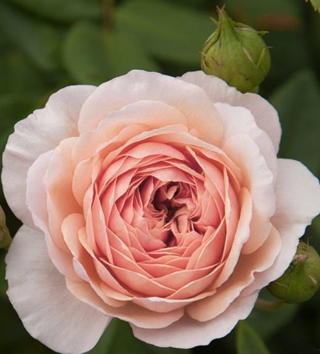 Above: "Everlasting Arms," an American gospel song performed by musicians around the world. The video is part of the Playing for Change project, whose mission is "to connect the world through music, born from the shared belief that music has the power to break down boundaries and overcome distances between people."
Above: "Everlasting Arms," an American gospel song performed by musicians around the world. The video is part of the Playing for Change project, whose mission is "to connect the world through music, born from the shared belief that music has the power to break down boundaries and overcome distances between people."
Below: "Love Train" by Turnaround Arts, a program that brings professional artists into struggling schools across America. The video features Turnaround students performing alongside the artists who have taught and mentored them. It was filmed with support from the Kennedy Center in DC, and the Play for Change foundation.
Photographs: rose varieties named after artists Vanessa Bell, William Morris, and Beatrix Potter.
March 15, 2019
Waking up to sorrow
On another day of terrible news, I send deep love to Muslim friends, neighbours, publishing colleagues, and the worldwide Muslim community. "Thoughts and prayers" are not enough, of course. I stand beside you, working for change.
"I am so tired of waiting, aren���t you, for the world to become good and beautiful and kind?" - Langston Hughes
The poem in the picture captions, from The Essential Rumi , was translated by Coleman Banks (Harpers, 2004); all rights reserved.
There is no time for despair
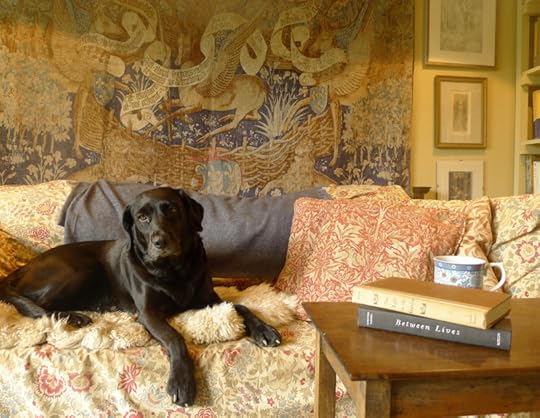 This post first appeared on Myth & Moor in 2016. Alas, it's still relevant today....
This post first appeared on Myth & Moor in 2016. Alas, it's still relevant today....
When the news is grim, and the clamour of the Internet is harsh and cacophonous, I find it grounding, healing, and necessary to turn away from keyboard and screens, and be fully present in the tactile world: in the morning light sifting through the studio, in the rising of the wind through the trees behind, in the words slowly forming in ink on fresh white paper spread out on my wooden desktop.
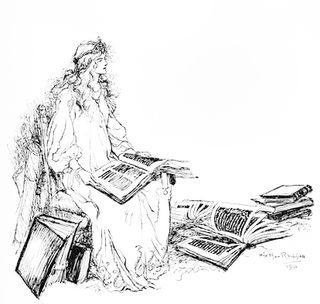 Instead of flicking through Web pages, imbibing the Internet's manic energy and then coming offline feeling fractured and spent, I pull books from down the shelves and turn their rustling pages at a measured, more human pace...and my soul unclenches. My attention deepens. Something vital in me is quickened back to life. And yes, I am using a keyboard now to share these thoughts with you online, but it's not a full rejection of the Web I am after in my life. It's proportion and balance.
Instead of flicking through Web pages, imbibing the Internet's manic energy and then coming offline feeling fractured and spent, I pull books from down the shelves and turn their rustling pages at a measured, more human pace...and my soul unclenches. My attention deepens. Something vital in me is quickened back to life. And yes, I am using a keyboard now to share these thoughts with you online, but it's not a full rejection of the Web I am after in my life. It's proportion and balance.
The Internet is a useful communication platform, and an increasingly important one...but books, oh, books are more than paper and ink. They are powerful medicine. Real books, I mean. Physical books, sitting on the dusty shelves of my studio and surrounding me like old friends, dog-earred and battered with love and use, their pages thick with margin notes and underlines. How could I ever doubt that art matters? Words have saved me over and over. Words are saving me right now. Books are what I turn to when the world grows dark, and they never fail to give me strength.
This morning, for instance, Ben Okri asks me:
"What hope is there for individual reality or authenticity, when the forces of violence and orthodoxy, the earthly powers of guns and bombs and manipulated public opinion make it impossible for us to be authentic and fulfilled human beings?"
I've been asking myself the same question all week.
"The only hope," he answers, "is in the creation of alternative values, alternative realities. The only hope is in daring to redream one's place in the world -- a beautiful act of imagination, and a sustained act of self becoming. Which is to say that in some way or another we breach and confound the accepted frontiers of things."
Then Rebecca Solnit joins the conversation:
"Cause-and-effect assumes history marches forward," she notes, "but history is not an army. It's a crab scuttling sideways, a drip of soft water wearing away stone, an earthquake breaking centuries of tension. Sometimes one person inspires a movement, or her words do decades later, sometimes a few passionate people change the world; sometimes they start a mass movement and millions do; sometimes those millions are stirred by the same outrage or the same ideal, and change comes upon us like a change of weather. All that these transformations have in common is that they begin in the imagination, in hope."
"To be hopeful in bad times is not just foolishly romantic," adds Howard Zinn. "It is based on the fact that human history is a history not only of cruelty, but also of compassion, sacrifice, courage, kindness. What we choose to emphasize in this complex history will determine our lives. If we see only the worst, it destroys our capacity to do something. If we remember those times and places -- and there are so many -- where people have behaved magnificently, this gives us the energy to act, and at least the possibility of sending this spinning top of a world in a different direction."
Barry Lopez pulls me out of a Western-centric point of view, reminding me of the things I share in common with people the world over:
"I believe in all human societies there is a desire to love and be loved," he says, "to experience the full fierceness of human emotion, and to make a measure of the sacred part of one's life. Wherever I've traveled -- Kenya, Chile, Australia, Japan -- I've found the most dependable way to preserve these possibilities is to be reminded of them in stories. Stories do not give instruction, they do not explain how to love a companion or how to find God. They offer, instead, patterns of sound and association, of event and image. Suspended as listeners and readers in these patterns, we might reimagine our lives. It is through story that we embrace the great breadth of memory, that we can distinguish what is true, and that we may glimpse, at least occasionally, how to live without despair in the midst of the horror that dogs and unhinges us."
Terry Tempest Williams concurs, and affirms the role that artists play in the transmission of such stories:
"Bearing witness to both the beauty and pain of our world is a task that I want to be part of. As writers, this is our work. By bearing witness, the story that is told can provide a healing ground. Through the art of language, the art of story, alchemy can occur. And if we choose to turn our backs, we've walked away from what it means to be human."
Then Toni Morrison takes me firmly by the shoulders and sends me back to my desk again:
Troubled times, she says, are "precisely the time when artists go to work. There is no time for despair, no place for self-pity, no need for silence, no room for fear. We speak, we write, we do language. That is how civilizations heal.
"I know the world is bruised and bleeding," she adds, "and though it is important not to ignore its pain, it is also critical to refuse to succumb to its malevolence. Like failure, chaos contains information that can lead to knowledge -- even wisdom. Like art."
Like art indeed.
Words: The first five quotes above are from the following books, all recommended: A Way of Being Free by Ben Okri (Phoenix, 1998); Hope in the Dark by Rebecca Solnit (Nation Books, 2005); You Can't Be Neutral on a Moving Train by Howard Zinn (Beacon Press 2002), About This Life by Barry Lopez (Vintage, 1999), and A Voice in the Wilderness: Conversations with Terry Tempest Williams, edited by Michael Austin (Utah State University Press, 2006). The final quote is from "No Place for Self-Pity, No Room for Fear" by Toni Morrison (The Nation, March 2013). All rights reserved by the authors. Pictures: The drawing and painting above are by Arthur Rackham (1867-1939). The photographs are from my studio cabin, perched on a Devon hillside at the edge of a small wood. They were taken in the spring and autumn of 2016.
March 14, 2019
The truth of fantasy
From "Perilous Realms: A Colloquy" by Lloyd Alexander:
"The pitfall in writing fantasy is not adding enough realism. Fantasy deals with the impossible, not the illogical. Creating a secondary world where the impossible becomes ordinary does not carry with it a license to do as one pleases. In conception, and in its deep substructures, the fantasy world must, if anything, be more carefully rationalized than the real world.
"The real world, as we all know, sometimes to our bewilderment, is often illogical, inconsistent, a kind of elaborate random walk. In fantasy, magical elements have to make sense in their own framework. The goal, of course, is to make fantasy seem absolutely real and convincing. This statement applies not only to setting but to characters as well. The writer may populate his imaginary world with all manner of imaginary creatures, human or otherwise. But within that world they must be as carefully observed as in any work of realism. They must have weight, solidity, dimension. Their fantastic condition must speak to our real one.
"Sheer inventiveness can be amusing, entertaining, even dazzling, and I don't mean to downgrade it. The danger is that too often it can turn into sheer gimmickry. Choosing the wrong form is, I think, probably the biggest risk in any kind of creation. Fantasy, however, seems to offer special temptations. To the unwary writer it promises such fun and freedom, great soaring flights of unbounded imagination. This promise can turn out to be a siren song. Before listening to it, the writer would be well advised to ask, Why fantasy instead of some other form? Unless fantasy is the best and only way a writer can express what is deepest in his mind and heart, the writer should consider some other mode and spare himself, and his readers, much labor and grief.
"This is not to say that writers of realism have it ay easier or are any less vulnerable to dangers. If a work of fantasy can fail through lack of realism, a work of realism can fail can fail through lack of fantasy. In this case I use the word fantasy in the sense of transformative imagination. Realism is not reality. The magic of realism is that it can seem to be real life, more real even than life itself. But this marvelous illusion comes from the transformative imagination of the writer -- imagination that shapes, manipulates, and illuminates. Without it the work is only a play of surfaces.
" 'True to life' may not always be true enough. The difficulty is perhaps in confusing truth with objectivity. By its very nature, art can never be objective. Try as we might, we can't 'tell it like it is.' We can only tell it the way it seems to us. And this, of course, is what we must do -- in realism or in fantasy -- if we hope to create anything of durable value.
"We have always needed good art to sustain us, to strengthen us, even to console us for being born human. Where better can we learn to see through the eyes of others, to gain compassion, to try to make sense of the world outside ourselves and the world within ourselves?"
Indeed.
The glorious drawings in this post are by my friend and village neighbour Alan Lee. He's known best as the illustrator of J.R.R. Tolkien's books, and for his Oscar-winning design work on the Lord of the Rings films -- but he's also created art for numerous other beautiful editions, including Black Ships Before Troy and The Wanderings of Odysseus with Rosemary Sutcliffe, Merlin Dreams with Peter Dickinson, The Moon's Revenge with Joan Aiken, Faeries with Brian Froud, and stunning editions of The Mabinogion and Ovid's Metamorphoses.
"I spend as much time as I can sketching from nature," he says. "Dartmoor contains such a rich variety of landscape -- as many boulders, foaming rivers, and twisted trees as my heart could ever desire. When I look into a river, I feel I could spend a whole lifetime painting that river, from source to sea, and nothing else."
To learn more about Alan's work, go here. You can also follow him on Facebook and Twitter.
The passage above is from "Perilous Realms: A Colloquy" by Lloyd Alexander (1924-2007), published in Inncocence & Experience: Conversations and Essays on Children's Literature, edited by Harrison & Maguire (Lothrop, Lee, & Shepard Books, 1987). All rights to the art and text in this post reserved by the artist and author.
March 13, 2019
The subversive art of fantasy
From "It Doesn't Have to Be This Way" by Ursula K. Le Guin:
"The test of fairyland [is that] you cannot imagine two and one not making three but you can easily imagine
trees not growing fruit; you can imagine them growing candlesticks or tigers hanging on by the tail."
- G.K. Chesterton (1874-1936)
"The fantastic tale may suspend the laws of physics -- carpets fly; cats fade into invisibility, leaving only a smile -- and of probability -- the youngest of three brothers always wins the bride; the infant in the box cast upon the water survives unharmed -- but it carries its revolt against reality no further. 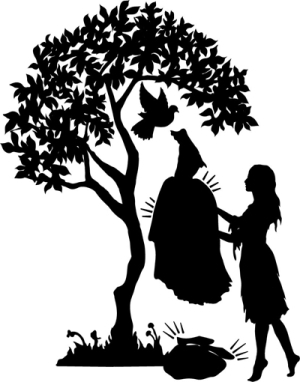 Mathematical order is unquestioned. Two and one make three, in Koshei's castle and Alice's Wonderland (especially in Wonderland). Euclid's geometry -- or possibly Reimann's -- somebody's geometry anyhow -- governs the layout. Otherwise incoherence would invade and paralyze the narrative.
Mathematical order is unquestioned. Two and one make three, in Koshei's castle and Alice's Wonderland (especially in Wonderland). Euclid's geometry -- or possibly Reimann's -- somebody's geometry anyhow -- governs the layout. Otherwise incoherence would invade and paralyze the narrative.
"There lies the main difference between childish imaginings and imaginative literature. The child 'telling a story' roams about among the imaginary and half-understood without knowing the difference, content with the sound of language and the pure play of fantasy to no particular end, and that's the charm of it. But fantasies, whether folktales or sophisticated literature, are stories in the adult, demanding sense. They can ignore certain laws of physics, but not causality. They start here and go there (or back here), and though the mode of travel may be unusual, and the here and there may be wildly exotic and unfamiliar places, they must both have a location on the map of that world and a relationship to the map of our world. If not, the hearer or reader of the tale will be set adrift in a sea of inconsequential inconsistencies, or, worse yet, left drowning in the shallow puddle of the author's wishful thinking.
"It doesn't have to be the way it is. That is what fantasy says.
"It doesn't say, 'Anything goes' -- that's irresponsibility, when two and one make five, or forty-seven, or whudevva, and the story doesn't 'add up,' as we say.
"Fantasy doesn't say, 'Nothing is' -- that's nihilism. And it doesn't say, 'It ought to be this way' -- that's utopianism, a different enterprise. Fantasy isn't meliorative. The happy ending, however enjoyable to the reader, applies to the characters only; this is fiction, not prediction and not prescription.
"It doesn't have to be the way it is is a playful statement, made in the context of fiction, with no claim to 'being real.' Yet it is a subversive statement.
"Subversion doesn't suit people who, feeling their adjustment to life has been successful, want things to go on just as they are, or people who need support from authority assuring them that things are as they have to be. Fantasy not only asks 'What if things didn't go on just as they do?' but demonstrates what they might be like if they went otherwise -- thus gnawing at the very foundation of the belief that things have to be the way they are. [...]
"Upholders and defenders of the status quo, political, social, economic, religious, or literary, may denigrate or diabolize or dismiss imaginative literature, because it is -- more than any other kind of writing -- subversive by nature. It has proved, over many centuries, a useful instrument of resistance to oppression.
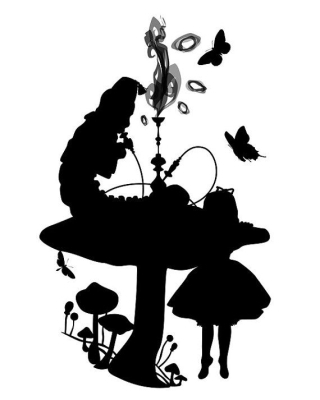 "Yet as Chesterton points out, fantasy stops short of nihilist violence, of destroying all the laws and burning all the boats. (Like Tolkien, Chesterton was an imaginative writer and a practicing Catholic, and thus perhaps particularly aware of tensions and boundaries.) Two and one make three. Two of the brothers fail the quest, the third carries it through. Action is met with reaction. Fate, Luck, Necessity are as inexorable in Middle-earth as in Colonus or South Dakota. The fantasy tale begins here and ends there (or back here), where the subtle and ineluctable obligations and responsibilities of narrative art have taken it. Down on the bedrock, things are as they have to be. It's only everywhere above the bedrock that nothing has to be the way it is.
"Yet as Chesterton points out, fantasy stops short of nihilist violence, of destroying all the laws and burning all the boats. (Like Tolkien, Chesterton was an imaginative writer and a practicing Catholic, and thus perhaps particularly aware of tensions and boundaries.) Two and one make three. Two of the brothers fail the quest, the third carries it through. Action is met with reaction. Fate, Luck, Necessity are as inexorable in Middle-earth as in Colonus or South Dakota. The fantasy tale begins here and ends there (or back here), where the subtle and ineluctable obligations and responsibilities of narrative art have taken it. Down on the bedrock, things are as they have to be. It's only everywhere above the bedrock that nothing has to be the way it is.
"There really is nothing to fear in fantasy unless you are afraid of the freedom of uncertainty. This is why it's hard for me to imagine that anyone who likes science can dislike fantasy. Both are based so profoundly on the admission of uncertainty, the welcoming of unanswered questions. Of course the scientist seeks to ask how things are the way they are, not to imagine how they might be otherwise. But are the two operations opposed or related? We can't question reality directly, only by questioning our conventions, our beliefs, our orthodoxy, our construction of reality. All Galileo said, all Darwin said, was 'It doesn't have to be the way we thought it was.' "
The magical imagery today is by Laura Barrett, an artist specialising in silhouettes and monochrome patterns. Based in South East London, she illustrates books (in both traditional and unusual forms), creates designs for a wide variety of clients, and makes animations and large-scale illustrations for graphic installations and exhibitions.
"My work is often narrative based and inspired by the darker side of folk and fairy tales," she says, "as well as traditional Scherenschnitte (paper cutting). I like to explore these themes through the use of silhouettes, which I create by drawing with a graphics tablet in Adobe Illustrator. Working digitally allows me a great deal of flexibility whilst retaining a hand crafted quality."
Visit her website & shop to see more of her work, or go here to learn more about the artist's creative process. You can also follow her on Instagram and Twitter.
The passages above are from "It Doesn't Have to Be the Way It Is," published in No Time To Spare by Ursula K. Le Guin (Houghton Mifflin, 2017). All rights to the text and art above reserved by the author and artist.
March 12, 2019
Why we need fairy tales
From "Why We Need Fairy Tales: Jeanette Winterson on Oscar Wilde":
"Reason and logic are tools for understanding the world. We need a means of understanding ourselves, too. That is what imagination allows. When a child reads of a Nightingale who bleeds her song into a rose for love's sake, or of a Selfish Giant who puts a wall round life, or of a Fisherman who wants to be rid of his Soul, or of a statue who feels the suffering of the world more keenly than the Mathematics Master who scoffs at his pupils for dreaming about Angels, the child knows at once both the mystery and truth of such stories. We have all at some point in our lives been the overlooked idiot who finds a way to kill the dragon, win the treasure, marry the princess.
"As explanations of the world, fairy stories tell us what science and philosophy cannot and need not. There are different ways of knowing."
To read the full essay, go here.
The illustrations are by Austrian book artist Lisbeth Zwerger, for Wilde's The Canterville Ghost and The Selfish Giant. Zwerger, based in Vienna, has illustrated many exquisite volumes for children, ranging from fairy tales to classic stories by Lewis Carroll, E. Nesbith, and L. Frank Baum. She was awarded the Hans Christian Andersen Medal for her contribution to children's lierature in 1990. Her work has been collected in The Art of Lisbeth Zwerger and Wonderment, both published by North-South Books.
"Fairy tales or imaginary tales by poets/writers appeal to me much more than traditional/collected tales," says the artist. "The reason for this preference is the literary language. It's not just the content, but it��s actually the specific language that draws me into a story."
The passage above is from an essay by Jeanette Winterson, published in The Guardian (October 2013). The poem in the picture captions is from Poetry (March 2010). All rights to the text and art above reserved by the authors and artist.
Why we need stories
From "Why We Need Fairy Tales: Jeanette Winterson on Oscar Wilde":
"Reason and logic are tools for understanding the world. We need a means of understanding ourselves, too. That is what imagination allows. When a child reads of a Nightingale who bleeds her song into a rose for love's sake, or of a Selfish Giant who puts a wall round life, or of a Fisherman who wants to be rid of his Soul, or of a statue who feels the suffering of the world more keenly than the Mathematics Master who scoffs at his pupils for dreaming about Angels, the child knows at once both the mystery and truth of such stories. We have all at some point in our lives been the overlooked idiot who finds a way to kill the dragon, win the treasure, marry the princess.
"As explanations of the world, fairy stories tell us what science and philosophy cannot and need not. There are different ways of knowing."
To read the full essay, go here.
The illustrations are by Austrian book artist Lisbeth Zwerger, for Wilde's The Canterville Ghost and The Selfish Giant. Zwerger, based in Vienna, has illustrated many exquisite volumes for children, ranging from fairy tales to classic stories by Lewis Carroll, E. Nesbith, and L. Frank Baum. She was awarded the Hans Christian Andersen Medal for her contribution to children's lierature in 1990. Her work has been collected in The Art of Lisbeth Zwerger and Wonderment, both published by North-South Books.
"Fairy tales or imaginary tales by poets/writers appeal to me much more than traditional/collected tales," says the artist. "The reason for this preference is the literary language. It's not just the content, but it��s actually the specific language that draws me into a story."
The passage above is from an essay by Jeanette Winterson, published in The Guardian (October 2013). The poem in the picture captions is from Poetry (March 2010). All rights to the text and art above reserved by the authors and artist.
March 11, 2019
Tunes for a Monday Morning
Music from our neighbours to the north today...
Above: "City Garden's" by the Danish/Swedish trio Dreamer's Circus (Nikolaj Busk, Rune Tonsgaard S��rensen, and Rune Tonsgaard S��rensen). The song (recorded on the Danish island of M��n in 2017) appears on their latest album, The Rooftop Sessions (2018).
Below: "Then We Waltzed" by Dreamer's Circus, also from The Rooftop Sessions.
Above: "Mitt hela hj��rta" by the Swedish folk vocal group Kongero (Anna Wikenius, Lotta Andersson, Anna Larsson, and Emma Bj��rling). This lovely song appeared on their first album, om mikaelidagen (2008), but I also recommend their most recent album, Kom (2o17).
Below: "When the Land is White with Snow" performed by the Finnish group Frigg (Tommi Asplund, Tero Hyv��luoma, Alina j��rvel��, Juho Kivivuori, Esko J��rvel��, Anssi Salminen, and Petri Prauda). The song -- by English folk musician Chris Wood, with a new arrangement by Esko J��rvel�� -- appears on Frigg's new album, Joululaulut (2018).
Above: "What Will We Do/Fjellv��k (Mountain Bird)," performed by the Norwegian and Irish Snowflake Trio (Frode Halti, Vegar V��rdal, and Nuala Kennedy). The song -- an Irish traveller ballad combined with a Nordic waltz -- appears on the group's new album, Sun Dogs (2019).
Below: "Hiljainen Suru," performed by the Finnish and Irish trio Slow Moving Clouds (Aki, Ultan O'Brien, and Kevin Murphy). The song appeared on their debut album, Os (2015).
The art today is by Finnish painter Pekka Halonen (1865-1933). Born to a farming family in Lapinlahti, he trained in art in Helsinki and Paris, studied under Paul Gaughin, then returned home to devote himself to painting the Finnish landscape and people. His house and studio on on Lake Tuusula, once the center of a rural arts colony, is now a house museum dedicated to Halonen's life and work.
March 7, 2019
Where the wild things are
From "Turning Our Fairy Tales Feral Again" by Sylvia V. Linsteadt:
"Humans are storytelling creatures. We need story, we need deep mythic happenings, as much as we need food and sun: to set us in our place in the family of things, in a world that lives and breathes and throws us wild tests, to show us the wildernesses and the lakes, the transforming swans, of our own minds. These minds of ours, after all, are themselves wild, shaped directly by our long legacy as hunters, as readers of wind, fir-tip, animal trail, paw-mark in mud. We are made for narrative, because narrative is what once led us to food, be it elk, salmonberry or hare; to that sacred communion of one body being eaten by another, literally transformed, and afterward sung to.
"The narratives we read, and watch, and tell ourselves about the relationship between humans and nature have cut out the voices of all wild things. They���ve cut out the breathing world and made us think we are alone and above. If these narratives don���t change -- if the elk and the fogs don���t again take their places and speak -- all manner of policies, conservation efforts and recycling bins won���t be worth a damn. We live in a world where, despite our best intentions, the stories we read -- literary, fantasy, science fiction, mystery, horror, poetry -- are almost wholly human-centric. Wild places and animals and weather patterns are stage sets, the backdrop, like something carved from plywood and painted in. They have no voice, no subjective truth. In our dominant narratives, we are not one of many peoples -- grass people, frog people, fox people -- as the Hupa Indians of the Klamath River region say. We are the only people.
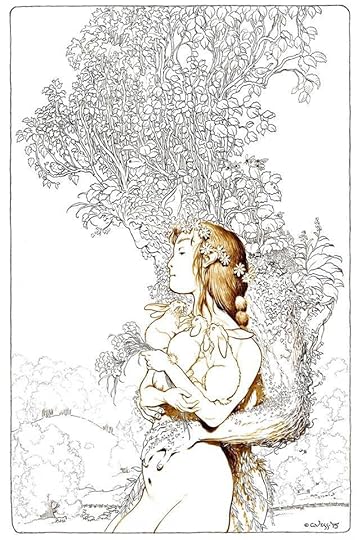
"This makes sense on one level, as we live in a world in which we believe the only things that are truly and wholly animate are ourselves. Mostly all of what we have been taught is predicated on this assumption. On another level, this is complete lunacy, complete insanity. At what point did we loose the sense of stories and myths actually arising from the world around us, its heartbeats, its bloodflows, its bat-eared songs?"
"At some point, one asks, 'Toward what end is my life lived?'" writes Diane Ackerman (in The Rarest of the Rare: Vanishing Animals, Timeless Worlds). "A great freedom comes from being able to answer that question. A sleeper can be decoyed out of bed by the sheer beauty of dawn on the open seas. Part of my job, as I see it, is to allow that to happen. Sleepers like me need at some point to rise and take their turn on morning watch for the sake of the planet, but also for their own sake, for the enrichment of their lives. From the deserts of Namibia to the razor-backed Himalayas, there are wonderful creatures that have roamed the Earth much longer than we, creatures that not only are worthy of our respect but could teach us about ourselves.���
"Storytellers ought not to be too tame," Ben Okri advises in his inspiring essay collection A Way of Being Free. "They ought to be wild creatures who function adequately in society. They are best in disguise. If they lose all their wildness, they cannot give us the truest joys."
"When we walk, holding stories in us, do they touch the ground through our footprints?" asks Sylvia Linsteadt. "What is this power of metaphor, by which we liken a thing we see to a thing we imagine or have seen before -- the granite crag to an old crystalline heart -- changing its form, allowing animation to suffuse the world via inference? Metaphor, perhaps, is the tame, the civilised, version of shamanic shapeshifting, word-magic, the recognition of stories as toothed messengers from the wilds. What if we turned the old nursery rhymes and fairytales we all know into feral creatures once again, set them loose in new lands to root through the acorn fall of oak trees? What else is there to do, if we want to keep any of the wildness of the world, and of ourselves?"
"The word 'feral' has a kind of magical potency," said T. H. White (in a letter to a friend, 1937).
And it does indeed.
The gloriously wild art here is by Charles Vess, of course -- one of the great storytellers and mythic artists of our age. Charles and I grew up together in the fantasy field in New York City in the 1980s; he now lives and works in wild hills of rural Virginia. I particularly recommend his extraordinary illustrations for the new complete edition of The Books of Earthsea by Ursula K. Le Guin (Saga Press, 2018) and Drawing Down the Moon: The Art of Charles Vess (Dark Horse Books, 2009), and his various collaborations with Charles de Lint and Neil Gaiman, in addition to all his other gorgeous books and comics.
I still remember these words from an interview with Charles published in 2006, which seem even more germane today: "What I get mostly from the news," he said, "is that nobody wants to pay attention to what anyone else believes or thinks, everyone wants to think that they know the only true story. The world seems to be getting very violent about 'I'm right and you're wrong, and you're going to go to hell if you don't believe what I believe.' To me, that is probably the biggest problem in our contemporary world. I think that using fantasy and mythology you can show that there are thousands of different stories and all of them are true. If you can get someone to accept that, then it's an easy step for them to accept others who are totally different, with a totally different mythology, with a totally different set of stories. They come to see that others' stories are just as valid as their own."
Please visit Charles' website to see more his art, and read his posts on the Muddy Colors illustration blog to learn more about the thoughts behind it.
Words: The passage above are from "Turning Our Fairy Tales Feral Again" by Sylvia V. Lindsteadt (written for The Dark Mountain Project, reprinted in Resilience, March 2103); Rarest of the Rare by Diane Ackerman (Random House, 1995); and A Way of Being Free by Ben Okri (Phoenix, 1998). The quote by Charles come from an interview in the Internation Conference for the Arts Journal, 2006. All rights reserved by the authors.
Pictures: (1) She Came Out of the Forest Like a Ghost. (2 ) A sketch for The Winter King. (3) A sketch for The King of the Summer Country and His Bride of Flowers. (4 & 5) Illustrations for Medicine Road by Charles de Lint. (6 & 7) Illustrations for The Cats of Tanglewood Forest by Charles de Lint. All rights reserved by the artist.
Photographs: (1) The new edition of The Books of Earthsea, Saga Press, 2018. (2) T
he hound contemplating Drawing Down the Moon, Instructions, A Circle of Cats, and The Cats of Tanglewood Forest. (3) Charles and me on the Isle of Skye, June 2017.
March 6, 2019
Returning to our senses
Following yesterday's post on modern lives mediated by computers and phones, David Abram urges us to return to sensory experience:
"It seems to me that those of us who work to preserve wild nature must work as well for a return to our senses, and for a renewed respect for sensorial modes of knowing. For the senses are our most immediate access to the more-than-human natural world. The eyes, the ears, the nostrils catching faint whiffs of sea-salt on the breeze, the fingertips grazing the smooth bark of a madrone, this porous skin rippling with chills at the felt presence of another animal -- our bodily senses bring us into relation with the breathing earth at every moment.
"If humankind seems to have forgotten its thorough dependence upon the earthly community of beings, it can only be because we���ve forgotten (or dismissed as irrelevant) the sensory dimension of our lives. The senses are what is most wild in us -- capacities that we share, in some manner, not only with other primates but with most other entities in the living landscape, from earthworms to eagles.
"Flowers responding to sunlight, tree roots extending rootlets in search of water, even the chemotaxis of a simple bacterium -- here, too, are sensation and sensitivity, distant variants of our own sentience. Apart from breathing and eating, the senses are our most intimate link with the living land, the primary way that the earth has of influencing our moods and of guiding our actions.
"Think of a honey bee drawn by vision and a kind of olfaction into the heart of a wildflower -- sensory perception thus effecting the intimate coupling between this organism and its local world. Our own senses, too, have coevolved with the sensuous earth that enfolds us. The human eyes have evolved in subtle interaction with the oceans and the air, formed and informed by the shifting patterns of the visible world. Our ears are now tuned, by their very structure, to the howling of wolves and the honking of geese.
"Sensory experience, we might say, is the way our body binds its life to the other lives that surround it, the way the earth couples itself to our thoughts and our dreams. Sensory perception is the glue that binds our separate nervous systems into the larger, encompassing ecosystem. As the bee���s compound eye draws it in to the wildflower, as a salmon dreams its way through gradients of scent toward its home stream, so our own senses have long tuned our awareness to particular aspects and shifts in the land, inducing particular moods, insights, and even actions that we mistakenly attribute solely to ourselves. If we ignore or devalue sensory experience, we lose our primary source of alignment with the larger ecology, imperilling both ourselves and the earth in the process.
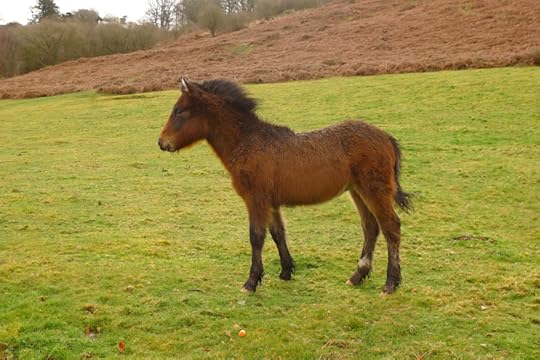
"I���m not saying that we should renounce abstract reason and simply abandon ourselves to our senses, or that we should halt our scientific questioning and the patient, careful analysis of evidence. Not at all: I���m saying that as thinkers and as scientists we should strive to let our insights be informed by our direct, sensory experience of the world around us; and further, that we should strive to express our experimental conclusions in a language accessible to direct experience, and so to gradually bring our science into accord with the animal intelligence of our breathing bodies."
Words: The passage about is from "Waking Our Animal Senses: Language and the Ecology of Sensory Experience" by David Abram, an essay first published in the Wild Earth Journal (1997). To read it in full, go here. The poem in the picture captions is by Scottish poet & translator Alastair Reid (1926-2014), a friend from my New York City days. The poem appeared in his beautiful collection Weathering (Dutton, 1978). All rights reserved by the authors. Pictures: An early morning encounter with ponies grazing on our village Commons.
Terri Windling's Blog
- Terri Windling's profile
- 708 followers


